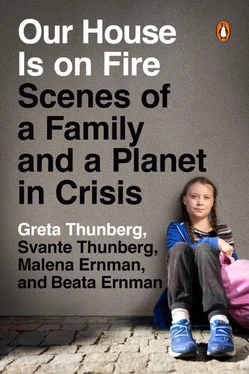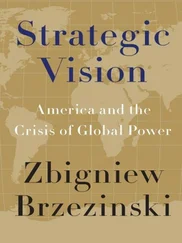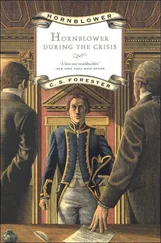Greta Thunberg - Our House Is on Fire - Scenes of a Family and a Planet in Crisis
Здесь есть возможность читать онлайн «Greta Thunberg - Our House Is on Fire - Scenes of a Family and a Planet in Crisis» весь текст электронной книги совершенно бесплатно (целиком полную версию без сокращений). В некоторых случаях можно слушать аудио, скачать через торрент в формате fb2 и присутствует краткое содержание. Город: New York, Год выпуска: 2020, ISBN: 2020, Издательство: Penguin Books, Жанр: Биографии и Мемуары, Публицистика, на английском языке. Описание произведения, (предисловие) а так же отзывы посетителей доступны на портале библиотеки ЛибКат.
- Название:Our House Is on Fire: Scenes of a Family and a Planet in Crisis
- Автор:
- Издательство:Penguin Books
- Жанр:
- Год:2020
- Город:New York
- ISBN:978-0-14313-357-5
- Рейтинг книги:4 / 5. Голосов: 1
-
Избранное:Добавить в избранное
- Отзывы:
-
Ваша оценка:
- 80
- 1
- 2
- 3
- 4
- 5
Our House Is on Fire: Scenes of a Family and a Planet in Crisis: краткое содержание, описание и аннотация
Предлагаем к чтению аннотацию, описание, краткое содержание или предисловие (зависит от того, что написал сам автор книги «Our House Is on Fire: Scenes of a Family and a Planet in Crisis»). Если вы не нашли необходимую информацию о книге — напишите в комментариях, мы постараемся отыскать её.
Our House Is on Fire: Scenes of a Family and a Planet in Crisis — читать онлайн бесплатно полную книгу (весь текст) целиком
Ниже представлен текст книги, разбитый по страницам. Система сохранения места последней прочитанной страницы, позволяет с удобством читать онлайн бесплатно книгу «Our House Is on Fire: Scenes of a Family and a Planet in Crisis», без необходимости каждый раз заново искать на чём Вы остановились. Поставьте закладку, и сможете в любой момент перейти на страницу, на которой закончили чтение.
Интервал:
Закладка:
Our life turns to chaos, and all forms of logic feel very far away. I read about hypersensitivity, gluten allergy, urinary tract infections, PANDAS and neuropsychiatric diagnoses.
During the day I sit with my phone and make calls from the moment I wake up until it’s too late to call anyone, stopping only to go out to Artipelag for the performances. All while Svante spends every waking minute trying to create a normal everyday life for the children.
I call the children’s psychiatry service (BUP), the healthcare information service, doctors, psychologists and every conceivable superficial acquaintance who may be able to offer the least bit of knowledge or guidance. It is an endless chain of conversations, and ‘I know someone who knows someone who knows someone…’
The adrenalin keeps me going for as long as it takes.
Despite the sleepless nights, and having lost all appetite, forgetting to eat.
My friend Kerstin knows Lina, who is a psychiatrist, and Lina spends hours talking to me. She listens, she offers advice, and she manages to get us an appointment at our local Kungsholmen BUP clinic.
At Greta’s school there’s a psychologist who is experienced with autism. She talks with both of us on the phone and says that a careful investigation must of course still be conducted, but in her eyes – and off the record – Greta shows clear signs of being on the autism spectrum.
‘High-functioning Asperger’s,’ the school psychologist says.
We do our best to take in what she’s telling us, which does sound extremely convincing, but coming to terms with the fact that our daughter could be autistic is a tremendous challenge. Not a single person in our circle of acquaintances reacts with anything other than a big ‘Huh?!’ when we test the autism theory out on them.
Greta does not have a single characteristic trait of autism or Asperger’s to us. So either the school psychologist is crazy or else we have run into a gigantic gap in public awareness.
Then follows an endless stream of meetings, from BUP to the Stockholm Centre for Eating Disorders, where we repeat our story and explore our options. We talk away while Greta sits silently. She has stopped speaking with anyone except me, Svante and Beata. We take turns relaying the details.
Sometimes there are up to six people present at the meetings, and although everyone really wants to offer all the help they can, it’s as if there’s no help to be had.
Not yet, at least.
We’re fumbling in the dark.
After two months of not eating Greta has lost almost 10 kg, which is a lot when you are rather small to begin with. Her body temperature is low and her pulse and blood pressure clearly indicate signs of starvation.
She no longer has the energy to take the stairs and her scores on the depression tests she takes are sky high. We explain to our daughter that we have to start preparing ourselves for a stay at the hospital, and we describe how it’s possible to get nutrition and food without eating, with tubes and drips.
SCENE 10.
We Call Him the Hans Rosling of Eating Disorders
In mid-November there’s a big meeting at BUP. Three people from the Centre for Eating Disorders are also present.
Greta sits silently. As usual. I’m crying. As usual.
‘If there are no developments after the weekend then we’ll have to admit you to the hospital,’ the doctor says.
On the stairs down to the lobby Greta turns round.
‘I want to start eating again.’
‘We’ll have a banana when we get home,’ Svante says.
‘No. I want to start eating again like normal.’
All three of us burst into tears and we go home and Greta eats a whole green apple. But nothing more will go down. As it turns out, it’s a little harder than you think to just start eating again.
But even though this makes Greta sad she doesn’t panic. She has made up her mind and we keep trying, and at last we find a little path that we can follow through the thicket.
We take a few careful, trial steps and it works. Our legs hold up.
We inch forward.
We have rice, avocado, calcium tablets, bananas and time.
We take our time.
Unlimited time.
Svante stays home, never leaving the children’s side. We listen to audiobooks, complete jigsaws, do homework, read about nature and natural science and note every meal on the paper on the wall.
Beata disappears into her room as soon as she comes home from school. We hardly see her. She notices our worry and avoids us.
Together with Greta we plough through A Faraway Island , Around the World in 80 Days and A Man Called Ove .
The whole emigrant series by Vilhelm Moberg. Strindberg, Selma Lagerlöf, Mark Twain, Emily Brontë and the Stockholm series by Per Anders Fogelström.
One banana, 25 minutes. One avocado with 25g of rice, 30 minutes.
Outside the window the last leaves are falling from the trees. And we start on the long, long road back.
After another two months the weight loss has not only stopped – it has reversed and now points slowly, cautiously upwards. To the list we have added salmon and hash browns.
At the Centre for Eating Disorders we have an amazing doctor who makes notes about weight and pulse rates and explains all about nutrients and the body’s building blocks during long educational lectures in his consultation room. And we start with sertraline, an antidepressant.
Greta is smart. She has a photographic memory and can rattle off all the world’s capitals. She knows the capitals of all the territories too. If I ask ‘Kerguelen Islands?’ she answers ‘Port-aux-Français.’
‘Sri Lanka?’
‘Sri Jayawardenapura Kotte.’
If I say ‘Backwards?’ then she answers just as fast. But backwards, of course. Svante likes to say that she’s a better version of him, who thirty-five years ago devoted his childhood to collecting airline timetables and learning them by heart. She can rattle off the periodic table from memory in under a minute but it bothers her that she doesn’t know how to pronounce some of the elements.
Greta’s teacher instructs her in her spare time. Two hours a week, at breaks and between periods, in the library. In secret. It’s enough to make Greta pass all her subjects in fifth grade.
Without that teacher nothing would have worked.
Nothing.
‘I’ve seen too many highly sensitive, high-functioning girls fall apart. I’ve seen enough,’ she says. ‘I’ve reached my limit.’
When people fall apart it’s hard to put them back together, and despite the fact that there is lots of will and knowledge to be found, the tools are often blunt and can be hopelessly ineffective.
There is help to be had within the framework of the system. For some. For those who fit into one of the few available templates or patterns. Greta is not one of them.
We have fought almost round the clock for several months before it sinks in that we have to do everything ourselves, and we are far from alone in that insight.
We are stuck in a Catch-22 between three different institutions and devote all our waking hours going to meetings about what can be done maybe, later on.
In any functioning social structure there should of course be an entity with sufficient resources to educate and inform society about mental illness and the various diagnoses. An authority that devoted itself to increasing awareness among teachers, parents and children about things we ought to know. Such an authority would probably be the most beneficial investment ever made in the history of modern society.
Читать дальшеИнтервал:
Закладка:
Похожие книги на «Our House Is on Fire: Scenes of a Family and a Planet in Crisis»
Представляем Вашему вниманию похожие книги на «Our House Is on Fire: Scenes of a Family and a Planet in Crisis» списком для выбора. Мы отобрали схожую по названию и смыслу литературу в надежде предоставить читателям больше вариантов отыскать новые, интересные, ещё непрочитанные произведения.
Обсуждение, отзывы о книге «Our House Is on Fire: Scenes of a Family and a Planet in Crisis» и просто собственные мнения читателей. Оставьте ваши комментарии, напишите, что Вы думаете о произведении, его смысле или главных героях. Укажите что конкретно понравилось, а что нет, и почему Вы так считаете.






![Корнелл Вулрич - Murder at Mother’s Knee [= Something That Happened in Our House]](/books/398097/kornell-vulrich-murder-at-mother-s-knee-somethin-thumb.webp)





